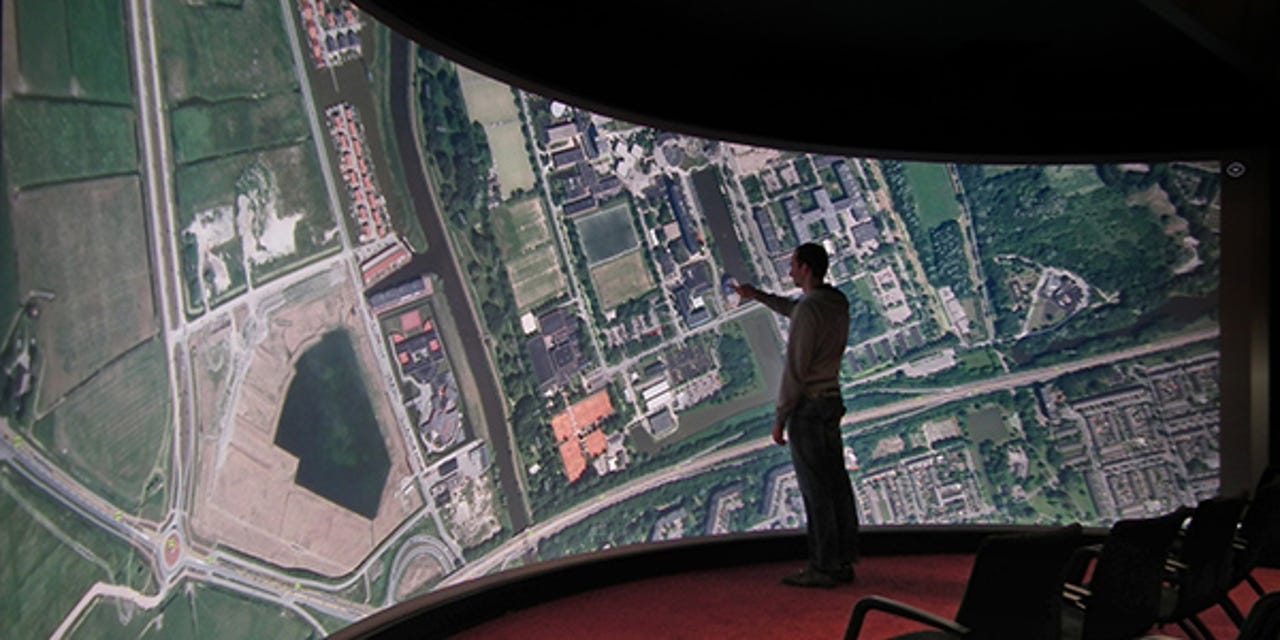Photos: World's largest touchscreen powers up


The University of Groningen's touchscreen offers the ultimate in multitouch...
This is the University of Groningen's Reality Touch Theatre, which the Dutch institution describes as the biggest touchscreen interface in the world.
The university has converted its existing cylindrical 3D theatre into a touchscreen that can detect more than 100 touch interactions at any one time.
The touchscreen uses diffuse illumination in which a layer of material on the front of the screen is used to reflect infrared light.
There are six optical motion-capture and motion-tracking cameras and 16 infrared illuminators - with a total of more than 1,000 infrared LEDs - located behind the screen.
The cameras are unable to see through the diffuse layer, and when people touch the front of the screen, the infrared light reflected back shows the computer system where the screen is being touched.
The screen reacts to the input of users in no more than 50 milliseconds and also has a 120Hz stereo system to add to the experience.
The technology used to create the touchscreen consists of off-the-shelf hardware and public domain software, including the Multi-Touch Vista user input management layer, Multitouch for Java, Community Core Vision machine-sensing technology and the Tuio protocol for multitouch devices.
The facility is being used by academics researching geographic information systems that capture, analyse and present data using techniques such as cartography, statistical analysis and database technology.
The large screen size changes the way in which people interact with each other and with the data on screen. For example, users can work in their own area but quickly switch to working as a group on the same screen.
The way in which interactions between users change will be studied by another University of Groningen research group investigating interaction methods for touchscreens.
The screen is 10 metres wide and curved to give users a more immersive experience.
For more recent photo stories on silicon.com see below: